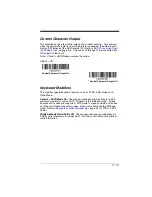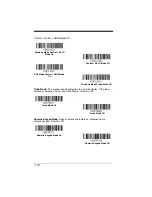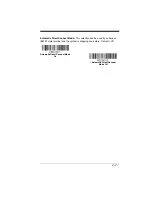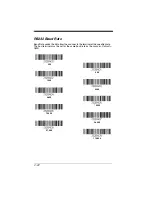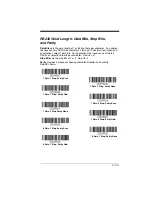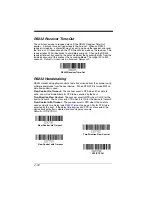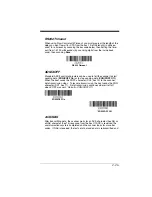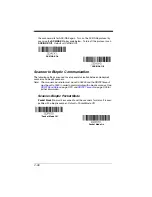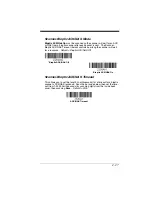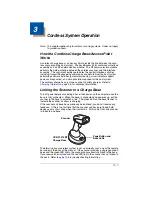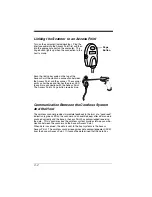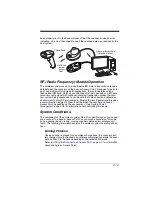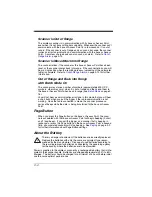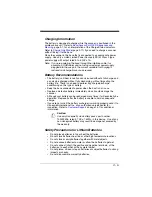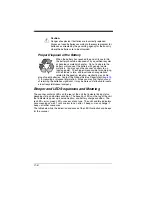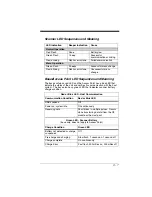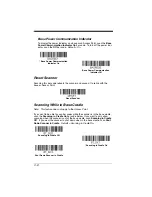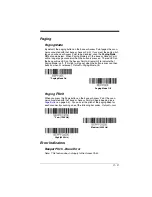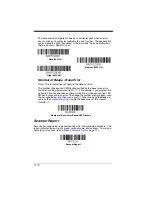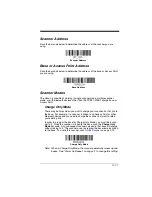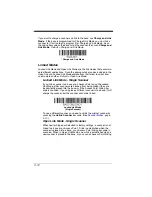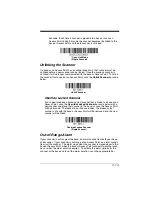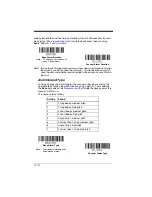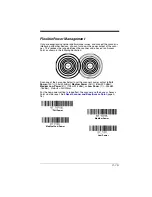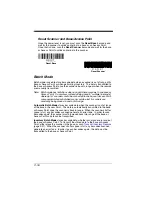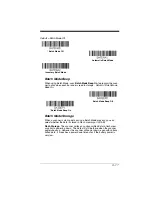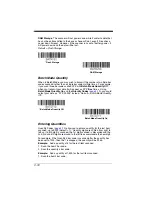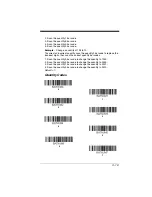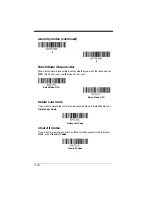
3 - 5
Charging Information
The battery is designed to charge while the scanner is positioned in the
cordless base unit. Refer to
Base/Access Point LED Sequences and
, page 3-7, for an interpretation of the Charge Status indicators.
Refer to
(page 3-11) if you need to charge a scanner
without linking it to the base.
Place the scanner in the base that is connected to an appropriate power
supply. Use only a Listed Limited Power Source (LPS) or Class 2 type
power supply with output rated 5 to 5.2Vdc, 1A.
Note: If you are powering the base through the interface cable (for
example, a USB cable) and not using an external power supply
plugged into the aux port, the current available for charging is
reduced and charge times are increased.
Battery Recommendations
•
The battery is a lithium ion cell and can be used without a full charge, and
can also be charged without fully discharging, without impacting the
battery life. There is no need to perform any charge/discharge
conditioning on this type of battery.
•
Keep the base connected to power when the host is not in use.
•
Replace a defective battery immediately since it could damage the
scanner.
•
Although your battery can be recharged many times, it will eventually be
depleted. Replace it after the battery is unable to hold an adequate
charge.
•
If you are not sure if the battery or charger is working properly, send it to
Honeywell International Inc. or an authorized service center for
inspection. Refer to
information.
Caution:
Use only Honeywell Li-ion battery packs, part number
100000495, rated 3.7 Vdc, 7.4Whr, in this device. Use of any
non-Honeywell battery may result in damage not covered by
the warranty.
Safety Precautions for Lithium Batteries
•
Do not place batteries in fire or heat the batteries.
•
Do not store batteries near fire or other high temperature locations.
•
Do not store or carry batteries together with metal objects.
•
Do not expose batteries to water or allow the batteries to get wet.
•
Do not connect (short) the positive and negative terminals, of the
batteries, to each other with any metal object.
•
Do not pierce, strike or step on batteries or subject batteries to strong
impacts or shocks.
•
Do not disassemble or modify batteries.
!
Summary of Contents for XENON 1900
Page 1: ... Xenon 1900 1902 Area Imaging Scanner User s Guide ...
Page 62: ...2 28 ...
Page 96: ...3 34 ...
Page 124: ...4 28 ...
Page 204: ...7 62 ...
Page 224: ...8 20 ...
Page 232: ...9 8 ...
Page 238: ...10 6 ...
Page 309: ...Sample Symbols Aztec MaxiCode Micro PDF417 Package Label Test Message Test Message ...
Page 310: ...Programming Chart 1 0 2 3 6 7 5 4 8 9 ...
Page 312: ...Honeywell Scanning Mobility 9680 Old Bailes Road Fort Mill SC 29707 Xenon UG Rev C 3 11 ...

